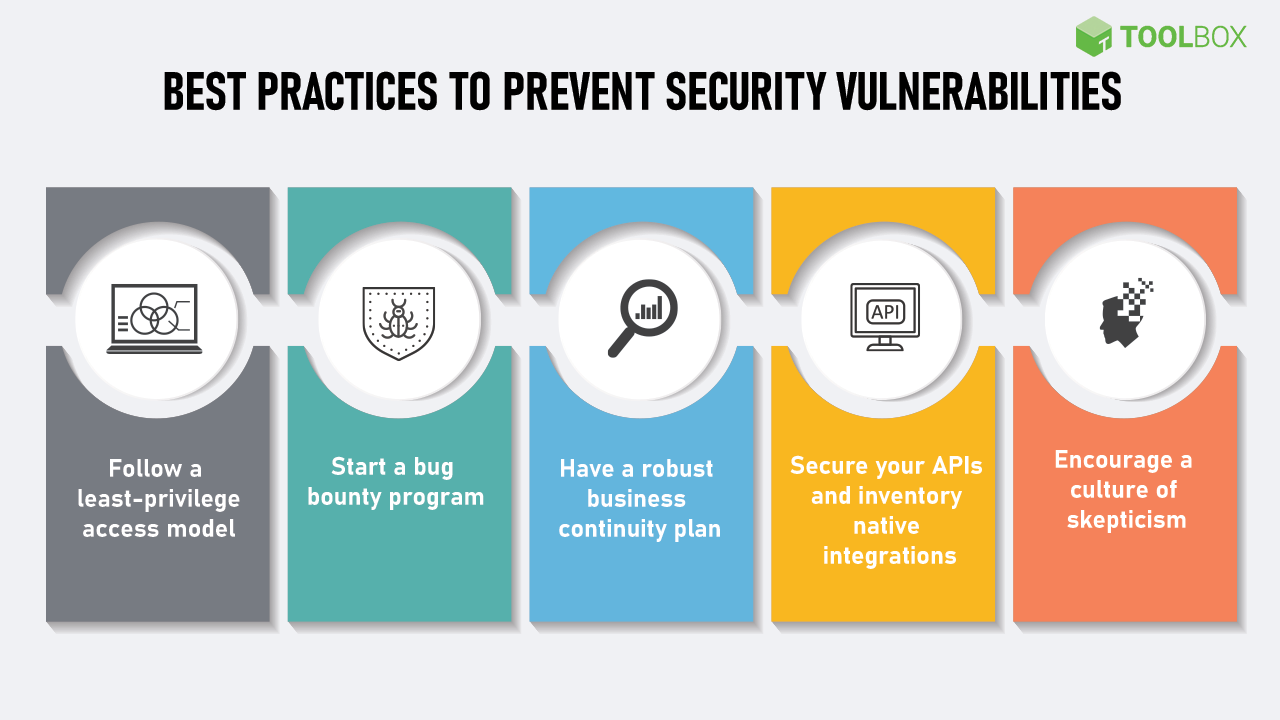
In today’s ever-evolving digital landscape, it is imperative for individuals and organizations alike to remain vigilant against potential security threats. Understanding how to effectively identify and protect against vulnerabilities is paramount in safeguarding sensitive information and preventing cyberattacks. This article will equip you with essential knowledge and practical strategies to identify and protect against potential security vulnerabilities, ensuring you are fortified against ever-present threats in the digital realm.
Understanding Security Vulnerabilities
What are security vulnerabilities?
Security vulnerabilities are weaknesses or flaws in a system that can be exploited by attackers to gain unauthorized access, manipulate data, disrupt services, or cause other malicious activities. These vulnerabilities can exist at various levels, including software applications, networks, human behavior, and hardware components. Identifying and addressing security vulnerabilities is crucial to maintaining the confidentiality, integrity, and availability of systems and data.
Why are they important to identify and protect against?
Identifying and protecting against security vulnerabilities is essential for several reasons. First and foremost, vulnerabilities pose a significant risk to the confidentiality, integrity, and availability of sensitive information. Exploiting these weaknesses can lead to data breaches, financial losses, reputational damage, and legal ramifications. By identifying and addressing vulnerabilities, organizations can minimize the potential impact of cyber-attacks and ensure the security of their systems and data. Moreover, addressing vulnerabilities proactively enables businesses to comply with industry regulations and standards, protecting the interests of both the organization and its stakeholders.
Identifying Security Vulnerabilities
Conducting vulnerability assessments
One of the key ways to identify security vulnerabilities is through vulnerability assessments. These assessments involve systematically scanning systems, networks, and applications to identify potential weaknesses. Vulnerability assessment tools, such as vulnerability scanners, can automatically analyze systems and highlight any known vulnerabilities based on their vulnerability databases. This process provides organizations with a comprehensive overview of potential vulnerabilities and enables them to prioritize their remediation efforts effectively.
Regular security audits
Regular security audits play a vital role in identifying security vulnerabilities. Through a comprehensive and systematic review of an organization’s security controls, processes, and policies, security auditors can identify gaps and weaknesses that could be exploited by malicious actors. Audits can encompass various areas, including physical security, network security, access controls, and organizational practices. By conducting regular security audits, organizations can proactively uncover vulnerabilities and take necessary actions to mitigate risks.
Utilizing penetration testing
Penetration testing, also known as ethical hacking, is an active approach to identifying security vulnerabilities. In this process, skilled security professionals simulate real-world attacks to identify weaknesses in systems, networks, and applications. Through controlled exploitation attempts, penetration testing can uncover vulnerabilities that may not be detected through traditional vulnerability assessments. By simulating real attacks, organizations can better understand their security posture and take proactive measures to strengthen their defenses.
Monitoring system logs and event data
Monitoring system logs and event data is another crucial aspect of identifying security vulnerabilities. By analyzing logs generated by various systems and devices, organizations can detect anomalies and unusual activities that may indicate a potential security incident. Through real-time monitoring and analysis, security teams can identify and respond to security vulnerabilities promptly. Additionally, leveraging security information and event management (SIEM) systems can help centralize log data and provide insights into potential vulnerabilities and threats.
Common Types of Security Vulnerabilities
Software vulnerabilities
Software vulnerabilities are among the most prevalent types of security vulnerabilities. They occur when flaws or weaknesses exist in software applications, operating systems, or libraries. Common examples include buffer overflow, SQL injection, cross-site scripting (XSS), and insecure deserialization. These vulnerabilities can be exploited to gain unauthorized access, manipulate data, or launch other malicious activities. To mitigate software vulnerabilities, organizations should prioritize secure coding practices, conduct regular code reviews and testing, and keep software up-to-date with patches and security updates.
Network vulnerabilities
Network vulnerabilities refer to weaknesses in network infrastructure and configurations that can be exploited by attackers. These vulnerabilities may include misconfigurations, weak or default passwords, outdated protocols, insecure remote access, or unpatched network devices. By exploiting network vulnerabilities, attackers can gain unauthorized access to systems, eavesdrop on network traffic, or launch denial-of-service (DoS) attacks. To protect against network vulnerabilities, organizations should implement strong network segmentation, use intrusion detection and prevention systems, enforce strict access control policies, and encrypt sensitive data in transit and at rest.
Human vulnerabilities
Human vulnerabilities encompass the actions, behaviors, or lack of awareness by individuals that can be exploited by attackers. This includes practices such as weak password management, phishing susceptibility, social engineering, and negligence in following security policies and procedures. Attackers often exploit human vulnerabilities to gain unauthorized access or deceive individuals into revealing sensitive information. To address human vulnerabilities, organizations should prioritize user security awareness training programs, enforce strong password policies, enable multi-factor authentication, and closely monitor user activity.
Hardware vulnerabilities
Hardware vulnerabilities refer to weaknesses or flaws in physical devices that can be exploited for unauthorized access or manipulation of information. These vulnerabilities can exist at various levels, including processors, memory modules, firmware, or even physical interfaces. Exploiting hardware vulnerabilities can lead to compromise of sensitive data, bypassing of security controls, or disruption of services. To protect against hardware vulnerabilities, organizations should ensure they source hardware from trusted vendors, keep firmware and drivers up-to-date with security patches, and implement physical security measures to safeguard hardware devices.
Protecting Against Security Vulnerabilities
Keeping software and systems up-to-date
Keeping software and systems up-to-date with the latest security patches and updates is a critical aspect of protecting against security vulnerabilities. Software vendors regularly release patches to address known vulnerabilities and improve the security of their products. By promptly applying these patches and updates, organizations can mitigate the risk of exploitation and ensure the security of their systems. Implementing automated patch management systems can streamline the process of deploying updates and minimize the time between patch release and deployment.
Implementing a robust firewall
Implementing a robust firewall is an essential defense mechanism to protect against security vulnerabilities. Firewalls act as a barrier between an organization’s internal network and the external world, monitoring and controlling incoming and outgoing network traffic. By enforcing security policies and filtering potentially malicious traffic, firewalls can prevent unauthorized access to systems and devices. Organizations should configure firewalls to block unnecessary ports, restrict access to sensitive resources, and regularly update firewall rules to stay protected against emerging threats.
Using strong authentication methods
Using strong authentication methods, such as multi-factor authentication (MFA), is crucial to protect against security vulnerabilities. Traditional username/password authentication is no longer sufficient in today’s threat landscape. By implementing MFA, which combines multiple factors such as something you know (password), something you have (smartphone token), or something you are (biometrics), organizations can significantly enhance the security of their authentication process. Strong authentication methods make it harder for attackers to gain unauthorized access, even if they manage to obtain a user’s credentials.
Educating employees about security best practices
Educating employees about security best practices is vital in protecting against security vulnerabilities. Employees are often the first line of defense against cyber-attacks, and their knowledge and awareness play a crucial role in maintaining the overall security posture of an organization. By providing regular security awareness training, organizations can educate employees about common threats, social engineering techniques, password management, and the importance of following security policies and procedures. Continuous reinforcement of security best practices helps create a security-conscious culture within the organization.
Regularly backing up data
Regularly backing up data is an essential practice to protect against security vulnerabilities. Data loss can occur due to various reasons, including malicious activities, hardware failures, natural disasters, or human error. By implementing a robust backup strategy, organizations can ensure that critical data is securely stored and can be restored in the event of a security incident or data loss. Organizations should schedule regular backups, store backup copies in secure locations, and test the restoration process to validate the effectiveness of the backup strategy.
Secure Coding Practices
Input validation and sanitization
Input validation and sanitization are essential secure coding practices to protect against security vulnerabilities, particularly those related to software applications. Validating and sanitizing user input helps prevent common attacks such as SQL injection, cross-site scripting, and command injection. By ensuring that user input meets specific criteria and removing or escaping potentially malicious characters, developers can minimize the risk of code execution vulnerabilities and protect against unauthorized access or data manipulation.
Avoiding insecure coding practices
Avoiding insecure coding practices is crucial in mitigating security vulnerabilities. Developers should follow secure coding guidelines and avoid known coding pitfalls, such as the use of outdated or deprecated functions, hardcoded credentials, or insecure data storage. Insecure coding practices can introduce vulnerabilities and weaken the overall security of an application. By adopting secure coding practices, developers can minimize the attack surface and reduce the likelihood of successful exploitation.
Using secure communication protocols
Using secure communication protocols is essential in protecting against security vulnerabilities, particularly those related to network communications. Data transmitted over insecure channels can be intercepted or modified by attackers, compromising the confidentiality and integrity of the information. By using secure protocols such as HTTPS, SSL/TLS, and SSH, organizations can encrypt sensitive data in transit and ensure that communication between systems remains secure. Implementing cryptographic algorithms and secure key management practices further enhance the security of communications.
Regular code reviews and testing
Regular code reviews and testing are vital in identifying and addressing security vulnerabilities in software applications. Code reviews involve systematically examining the source code to identify potential flaws, vulnerabilities, or insecure coding practices. By involving multiple developers and experienced security professionals, organizations can enhance the overall quality and security of their codebase. Additionally, conducting regular testing, including functional testing, security testing, and penetration testing, helps identify vulnerabilities that may not be apparent during code reviews. Comprehensive code reviews and testing increase the likelihood of uncovering potential security vulnerabilities and facilitate their timely remediation.
Best Practices for Network Security
Implementing strong network segmentation
Implementing strong network segmentation is crucial in protecting against security vulnerabilities. Network segmentation involves dividing a network into smaller, isolated segments to limit the potential impact of a security breach. By separating systems based on their function, sensitivity, or user access requirements, organizations can contain the spread of an attack and minimize the damage caused by a compromised system. Network segmentation also allows organizations to implement different security controls and monitoring mechanisms tailored to the specific needs of each network segment.
Using intrusion detection and prevention systems
Using intrusion detection and prevention systems (IDS/IPS) is essential in network security. IDS monitors network traffic and identifies potential security threats or unusual activities. IPS, on the other hand, actively blocks or mitigates detected threats in real-time. By deploying IDS/IPS solutions, organizations can detect and prevent unauthorized access attempts, network reconnaissance, or known attack patterns. IDS/IPS solutions provide organizations with increased visibility into their network traffic, helping identify potential security vulnerabilities and enabling timely response to emerging threats.
Enforcing strict access control policies
Enforcing strict access control policies is vital in network security. Access control mechanisms determine who can access specific resources, systems, or data within a network. By implementing and enforcing robust access control policies, organizations can limit access to authorized individuals and prevent unauthorized users from gaining entry. Access control policies may include strong authentication requirements, role-based access controls (RBAC), principle of least privilege, and segregation of duties. Regularly reviewing and auditing access control policies ensures their effectiveness and helps identify potential vulnerabilities or misconfigurations.
Encrypting sensitive data in transit and at rest
Encrypting sensitive data in transit and at rest is crucial in protecting against security vulnerabilities. Encryption transforms data into an unreadable format that can only be accessed by authorized entities. Encrypting data during transmission prevents eavesdropping and ensures the confidentiality and integrity of the information. Data encryption at rest safeguards stored data, protecting it from unauthorized access if physical devices or storage media are compromised. By implementing strong encryption algorithms and secure key management practices, organizations can protect sensitive data from potential security vulnerabilities.
User Awareness and Training
Establishing user security awareness training programs
Establishing user security awareness training programs is essential in promoting a security-conscious culture within an organization. Training programs educate employees about the latest threats, attack techniques, and best practices to follow to protect against security vulnerabilities. These programs may include online courses, interactive training modules, simulated phishing exercises, and regular communication about emerging threats. By raising user awareness and knowledge, organizations can empower employees to become proactive defenders against potential security vulnerabilities.
Creating strong password policies
Creating strong password policies is crucial in user security. Weak or easily guessable passwords are a significant security vulnerability and can be easily exploited by attackers. Organizations should enforce strong password requirements, including minimum length, complexity, and expiration rules. Additionally, encouraging the use of password managers and multi-factor authentication further enhances the security of user accounts. Regularly educating users about the importance of strong passwords and the risks associated with weak passwords helps reinforce the message and encourages compliance with password policies.
Enabling multi-factor authentication
Enabling multi-factor authentication (MFA) adds an extra layer of security to user accounts and protects against security vulnerabilities. MFA requires users to provide multiple authentication factors to prove their identity, making it harder for attackers to gain unauthorized access even if they have obtained a user’s credentials. By combining something the user knows (e.g., password), something the user has (e.g., smartphone token), and something the user is (e.g., biometrics), MFA significantly reduces the risk of successful credential-based attacks. Organizations should prioritize enabling MFA for all user accounts, particularly those with access to sensitive data or critical systems.
Monitoring user activity
Monitoring user activity is crucial in detecting and responding to security vulnerabilities. By closely monitoring user actions, organizations can identify any suspicious activities, unauthorized access attempts, or unusual behavior. User activity monitoring may include tracking login attempts, file access, system changes, or network activity. Through real-time monitoring and analysis of user activity logs, security teams can promptly respond to potential security incidents and investigate any anomalies. Regular monitoring and analysis of user activity help ensure the early detection of security vulnerabilities and minimize their potential impact.
Importance of Regular Updates
Patch management
Patch management is essential for protecting against security vulnerabilities. Software vendors regularly release patches and updates to address known vulnerabilities and improve system security. Organizations should establish a comprehensive patch management process that includes regular assessment of software vulnerabilities, testing of patches in a controlled environment, and timely deployment of patches across all systems. Patch management systems can automate the process, ensuring that critical security updates are applied promptly and consistently, reducing the window of vulnerability.
Updating antivirus definitions
Updating antivirus definitions is crucial in protecting against security vulnerabilities. Antivirus software relies on up-to-date definitions to identify and block known malware or malicious files. By regularly updating antivirus definitions, organizations can enhance the effectiveness of their antivirus solutions and protect against the latest threats. Organizations should configure antivirus software to update automatically or establish a process to regularly update definitions across all systems to ensure consistent protection.
Updating firmware and drivers
Updating firmware and drivers is essential in protecting against security vulnerabilities, particularly in hardware devices. Manufacturers often release firmware and driver updates to address identified vulnerabilities, improve performance, or enable new features. Organizations should establish a process to regularly check for firmware and driver updates for their devices and apply them promptly. Failure to update firmware and drivers may leave devices vulnerable to exploitation and compromise the overall security of the infrastructure.
Response and Recovery Planning
Developing an incident response plan
Developing an incident response plan is crucial in effectively responding to security vulnerabilities and minimizing their impact. An incident response plan outlines the procedures, roles, and responsibilities for handling security incidents. It includes steps for initial detection, containment, eradication, recovery, and post-incident analysis. By developing an incident response plan, organizations can ensure a coordinated and timely response to security incidents, minimizing the potential damage and facilitating the recovery process.
Implementing a disaster recovery plan
Implementing a disaster recovery plan is vital in recovering from security incidents and restoring normal operations. A disaster recovery plan outlines the procedures for restoring critical systems, applications, and data following a security breach or any other catastrophic event. It includes backup strategies, recovery time objectives (RTOs), and recovery point objectives (RPOs). By implementing a disaster recovery plan, organizations can minimize downtime, recover essential services quickly, and mitigate the impact of security vulnerabilities.
Performing regular backups
Performing regular backups is essential in protecting against security vulnerabilities and ensuring data availability. Regularly backing up critical systems, applications, and data ensures that they can be restored in the event of a security incident, hardware failure, or data loss. Organizations should establish backup schedules, securely store backup copies in offsite or cloud locations, and periodically test the restoration process to validate the integrity of backups. Regular backups provide a safety net and facilitate the recovery process, even in the face of security vulnerabilities.
Testing the effectiveness of the plans
Testing the effectiveness of incident response and disaster recovery plans is crucial in ensuring preparedness and resilience against security vulnerabilities. Organizations should periodically conduct tabletop exercises and simulated security incidents to validate the plans, identify gaps or weaknesses, and fine-tune response and recovery procedures. Testing helps identify any potential issues or oversights, enhance coordination among response teams, and ensure a prompt and effective response to security incidents. By regularly testing the plans, organizations can continuously improve their ability to detect, respond to, and recover from security vulnerabilities.
Collaboration and Information Sharing
Joining security communities and organizations
Joining security communities and organizations is beneficial in identifying and addressing security vulnerabilities. These communities provide platforms for professionals to share knowledge, insights, and best practices related to cybersecurity. By actively participating in such communities, organizations can stay up-to-date with the latest security trends, threat intelligence, and potential vulnerabilities. Collaborating with peers and sharing experiences helps organizations enhance their security posture, learn from others’ experiences, and develop effective strategies to safeguard against security vulnerabilities.
Participating in bug bounty programs
Participating in bug bounty programs is a proactive approach to identifying and addressing security vulnerabilities. Bug bounty programs invite independent security researchers and hackers to identify vulnerabilities in an organization’s systems or applications. By incentivizing external experts to find and report vulnerabilities, organizations can benefit from a fresh perspective and uncover weaknesses that may have been overlooked internally. Bug bounty programs provide organizations with an additional layer of security assurance and enable them to address vulnerabilities before they can be exploited maliciously.
Sharing information about vulnerabilities responsibly
Sharing information about vulnerabilities responsibly is crucial for collective defense against security vulnerabilities. When organizations become aware of vulnerabilities, they should follow responsible disclosure practices to share relevant information with vendors, security communities, or coordinating authorities. Responsible disclosure allows vendors to develop and release patches or mitigation strategies to address the vulnerabilities before they are publicly exploited. By sharing information responsibly, organizations contribute to a more secure ecosystem, protect themselves and others against potential security vulnerabilities, and promote collaboration in addressing emerging threats.
In conclusion, understanding security vulnerabilities and taking proactive measures to identify and protect against them is critical for organizations to maintain the security of their systems and data. By conducting vulnerability assessments, regular security audits, and penetration testing, organizations can identify weaknesses and address them timely. Implementing secure coding practices, network security measures, and user awareness training further strengthens the overall security posture. Regular updates, response and recovery planning, collaboration, and responsible information sharing play important roles in mitigating security vulnerabilities and ensuring the resilience of organizations in the face of evolving threats. By adopting comprehensive security measures and best practices, organizations can effectively identify and protect against potential security vulnerabilities.





